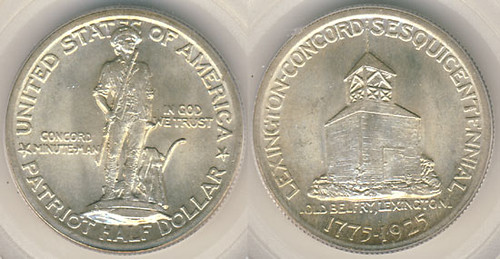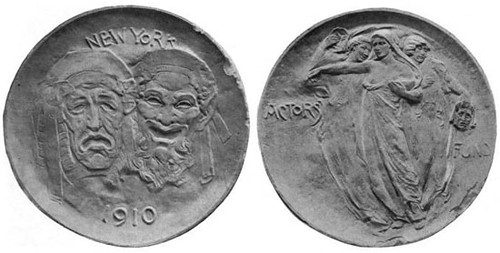
PREV ARTICLE
NEXT ARTICLE
FULL ISSUE
PREV FULL ISSUE
THE LIFE AND WORK OF CHESTER BEACH
Dennis Hengeveld published a nice article on CoinUpdate September 19, 2014 on the life and work of sculptor and coin designer Chester Beach. Here's an excerpt.
-Editor
Chester Beach was born on May 23, 1881 in San Francisco, CA. Relatively little is known about his early life, but at a young age he must have acquired an interest in art as he enrolled in the California School of Mechanical Arts when he was eighteen years old. He did not stay there for any length of time, however, as he soon enrolled in the Mark Hopkins Institute of Art, specializing in Jewelry design. Like many young American artists at the turn of the century, he moved to Paris, studying at the Ècole des Beaux Arts, before returning to the United States and opening a studio in New York City upon his return in 1907. He would remain in that city for the rest of his life, first working on 10th street and later relocating to 17th street.

In the art world, Chester Beach is mostly known for his busts as well as medals, and in the numismatic world of course for the four commemorative coins he designed or helped design. These are the 1923-S Monroe Half Dollar, the 1925 Lexington-Concord Half Dollar, the 1928 Hawaiian Half Dollar (modeled after designs by Juliette May Fraser) and the 1935 Hudson Half Dollar. Two of these (the Hawaiian and the Hudson) are considered to be key-dates within the classic commemorative series and are highly prized by collectors, and the Lexington-Concord is a popular issue with collectors because of its historical subject matter. One of the medals designed by Chester Beach is definitely worth a closer look. This is the 1919 medal issued by the American Numismatic Society commemorating the Peace of Versailles, one of the treaties that ended World War I. A scarce medal, a total of 318 bronze and 113 silver medals were made, each individually numbered on the rim. Beach’s design featured semi-nude figures representing War and Victory walking along with Justice seated on a winged Pegasus. A female represents victory while both War as well as Justice are represented by males. The ground on which the figures are standing could be interpreted as a serpent, perhaps signifying the losing side of the war. The reverse of this medal, which is quite scarce yet relatively affordable (especially so in bronze) featured a view of Versailles surrounded by the sun and a laurel wreath.

The medals designed by Beach, including the Peace of Versailles medal were often executed in a low relief, making them not as popular of a medalist as some of his contemporaries. Another famous medal were this feature is seen is the 1910 Actors Fund Medal of Honor, which continues to be awarded to this day to individuals and organizations that have enriched the entertainment industry. The design features two comical heads on the obverse, while the reverse features three figures, presumably actors. The first award, in 1910, was awarded to President William H. Taft, while other recipients include Ed Sullivan and Ronald Reagan among others.
To read the complete article, see:
The Numismatic Bibliomania Society is a non-profit organization promoting numismatic literature. See our web site at coinbooks.org. To submit items for publication in The E-Sylum, write to the Editor at this address: whomren@gmail.com To subscribe go to: https://my.binhost.com/lists/listinfo/esylum All Rights Reserved. NBS Home Page Contact the NBS webmaster 
|